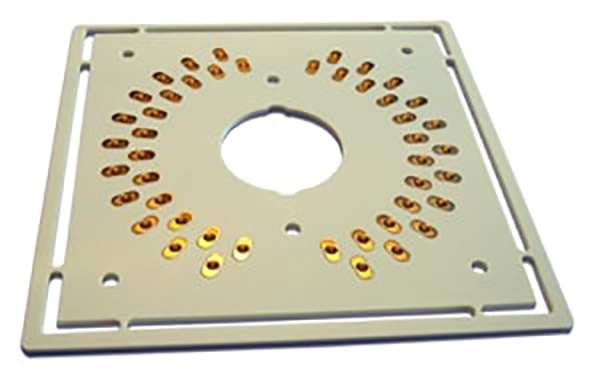Rogers 4350B Ro4350b PCB

Rogers 4350B Ro4350b PCB
Rogers Ro4350b high-frequency materials are glass fiber reinforced (non-PTFE) hydrocarbon / ceramic laminates designed for high volume, high-performance commercial applications. Ro4350b are designed to provide superior RF performance and cost-effective circuit production. The result is a low-loss material that can be produced using standard epoxy/glass (FR4) processes at competitive prices. The selection of laminates that are generally available to designers is greatly reduced as operating frequencies increase to 500 MHz or more. RO4350b PCB has the characteristics required for RF microwave developers and enables the repeatable design of filters, coupling networks, and impedance-controlled transmission lines. The low dielectric loss allows the use of the RO4350b series material in many applications where higher operating frequencies limit the use of conventionally printed circuit board laminates. The temperature coefficient of the dielectric constant is one of the lowest of all printed circuits and the dielectric constant is stable over a wide frequency range. This makes it an ideal substrate for broadband applications.
The quality of the hole should be used to determine tool life rather than tool wear. The RO4350b material provides good bore quality when drilling with drills that are worn to epoxy/glass standards. In contrast to Ep-Oxy / glass, the roughness of the material hole RO4350b does not increase significantly when using the tool. Typical values vary between 8 and 25 μm, regardless of the number of visits (up to 8,000 visits are evaluated). The roughness is directly related to the size of the ceramic filling and provides an advantageous topography for the adhesion of the hole wall. It has been found that the drilling conditions used for epoxy/glass plates give good hole quality with a strike rate greater than 2000.
The thermal expansion coefficient (CTE) of the RO4350b material offers several key benefits to the circuit designer. The coefficient of expansion of the material RO4350b is similar to that of copper, which makes the material visible.
Dimensional Stability
It is a property necessary for the construction of mixed dielectric multilayer pcb boards. The low CTE of RO4350 laminates on the Z-axis provides reliable through hole quality even in severe thermal shock applications. The material of the RO4350 series has a TG of more than 280 ° C (536 ° F), so its expansion properties remain stable at all process temperatures in the circuit. RO4350 Series laminates can be easily converted into printed circuit boards using standard FR4 circuit board processing techniques. Unlike high-performance PTFE-based materials, RO4350 series laminates do not require special preparation processes such as sodium etching. This material is a rigid, heat-stable laminate that can be treated with automated handling systems and washers used to make the copper surface.
Availability
RO4350b laminates are currently available in a variety of 1080 and 1674 glass fabric models, all of which meet the same laminated electrical performance specifications. Designed specifically for direct replacement of RO4350b material, RO4350 laminates use RoHS compliant flame retardant technology for applications requiring UL 94V-0 certification. These materials meet the requirements of IPC-4103/10 single sheets for RO4003C and / 11 for RO4350b.
Rogers PCB Production Guidelines
RO4350B high-frequency circuit materials have been developed to provide high-frequency performance comparable to woven PTFE glass substrates, which simplifies fabrication with epoxy/glass laminates. RO4350 is a thermoset material filled with hydrocarbon/glass reinforced ceramic with a very high glass transition temperature (TG> 280 ° C). Unlike PTFE-based microwave materials, no special treatment or via is required. As a result, the processing and assembly costs of the RO4350 material circuit are comparable to those of the epoxy/glass laminates.
Here are some basic tips for dealing with RO4350b double-sided plates. In general, the parameters and treatment methods used for epoxy/glass plates can be used to treat RO4350 plates.
Inlet and outlet materials must be flat and rigid to minimize copper burrs. Recommended input materials are aluminum and rigid composite panels (0.254 to 0.635 mm). Most conventional starting materials with or without an aluminum coating are suitable.
- Maximum Height of The Battery
The thickness of the material to be drilled must not exceed 70% of the groove length. This includes the thickness of the input material and penetration into the substrate.
Surface speeds of more than 500 SFM and chip load less than 0.05 mm (0.002 “) should be avoided as much as possible.